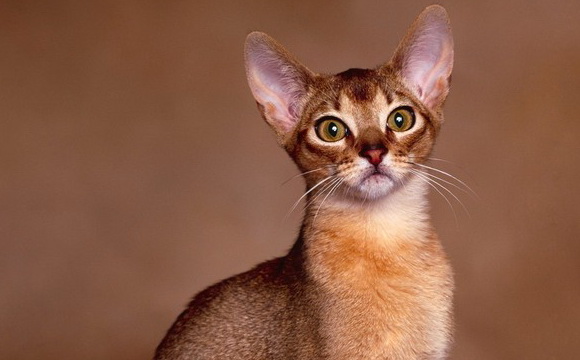History of the Abyssinian Cat
The Abyssinian cat, believed to be a descendant of the sacred cats worshiped in ancient Egypt over 4,000 years ago, is a breed shrouded in historical mystery. Notably, an Abyssinian named Zula was transported from Abyssinia (now Ethiopia) to England after the Abyssinian War in 1868. However, modern genetic studies suggest that today’s Abyssinians may have originated from cats in Southeast Asia and the Indian Ocean coast, closely resembling the African wildcat (Felis silvestris lybica), the ancestor of all domestic cats.
Although there is no concrete evidence linking Zula to today’s breed, the Abyssinian was established and refined in Britain. World War II nearly decimated the breed, but British breeders successfully revitalized it. The first Abyssinians arrived in America in the early 1900s, with active breeding beginning in the 1930s. Today, the Abyssinian is one of the most popular shorthaired breeds, second only to the Siamese.
Personality Traits
Abyssinians are known for their high spirits, courage, and curiosity. They are not ideal for those seeking a docile lap cat. Instead, they are dynamic, engaging in various antics to amuse their owners. These cats are highly involved in their owners’ lives, particularly at mealtimes. They are known to attach themselves to their owners’ legs when they sense dinner is near.
These natural athletes often perform acrobatics, perch on shoulders, crawl under covers, and sit on laps purring before racing off to explore. They are adept at opening doors and cupboards, demonstrating their intelligence and agility.
Physical Characteristics
The Abyssinian cat is a ticked or agouti breed, characterized by its distinctive coat. Each hair shaft displays bands of light and dark colors, with the hair ending in a dark tip. This unique coat gives the Abyssinian its striking appearance.
While Abyssinians are generally healthy, they can be prone to gingivitis and tooth decay, similar to their longhaired counterpart, the Somali. Regular tooth brushing, fluoride applications, and periodic professional teeth cleaning can help mitigate these issues. Additionally, Abyssinians and Somalis are susceptible to amyloidosis, a hereditary renal disease.
Care and Maintenance
Abyssinians require regular grooming to keep their coats healthy and free from loose hair. Their active nature also means they need plenty of mental and physical stimulation. Interactive toys, climbing structures, and regular playtime are essential to keep an Abyssinian cat happy.
These cats thrive on interaction and do best in homes where they are not left alone for long periods. They enjoy the company of their owners and can get along well with children and other pets if properly introduced.
Health and Well-being
To ensure the health and well-being of an Abyssinian cat, regular veterinary check-ups are crucial. This includes dental check-ups to prevent gingivitis and tooth decay. Monitoring for signs of amyloidosis and other hereditary conditions is also important. A balanced diet, tailored to the cat’s age, activity level, and health status, will help maintain its overall health.
Conclusion
The Abyssinian cat is a fascinating and dynamic breed, known for its rich history, engaging personality, and distinctive appearance. They require active involvement from their owners and thrive in environments where they are given plenty of attention and stimulation. With proper care and regular health monitoring, Abyssinians can be delightful and entertaining companions for many years.

